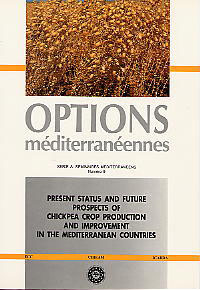| Article précédent | p. 141-143 | Article suivant |
Chickpea production in Greece
Chickpea is the most important pulse crop in Greece, after common beans. It is a spring crop, sown early in March and harvested in the middle of July, covering non-irrigated areas, mainly in rotation with wheat. The yearly planted area is 6000-8000 ha with a production of 7000-10000 t which meets the local demand in the country. The average seed yield is low (1120 kg/ha) due to the following limiting factors: a - moisture stress in spring sown crops; b - weed competition; and c - Ascochyta blight. Research at the Institute of Fodder Crops and Pastures is addressing to these problems and trying to develop genetypes and technology for winter sowing. It is expected that the chickpea cultivated area will either be maintained or will increase in the future, because there is an increasing interest in chickpea as animal feed.
- [ Afficher ]
- [ Télécharger ]
- [ Exporter la citation ]
Vous pouvez télécharger la citation au format :
- [ Imprimer ]
-
Mots-clés
CICER ARIETINUM, DATE DE SEMIS, GRECECiter cet article
Iliadis C. Chickpea production in Greece. In : Saxena M.C. (ed.), Cubero J.I. (ed.), Wery J. (ed.). Present status and future prospects of chickpea crop production and improvement in the Mediterranean countries. Zaragoza : CIHEAM, 1990. p. 141-143. (Options Méditerranéennes : Série A. Séminaires Méditerranéens; n. 9). Present Status and Future Prospects of Chickpea Crop Production and Improvement in the Mediterranean Countries, 11-13 Jul 1988, Zaragoza (Spain). http://om.ciheam.org/om/pdf/a09/91605022.pdf



